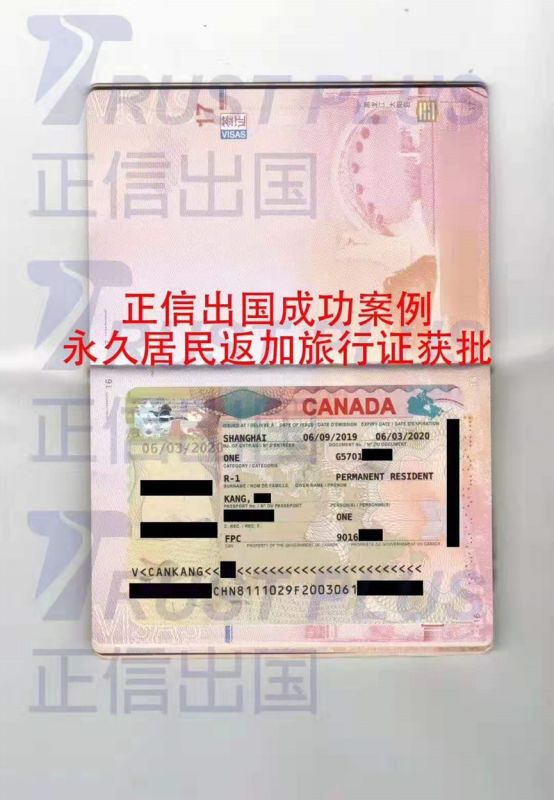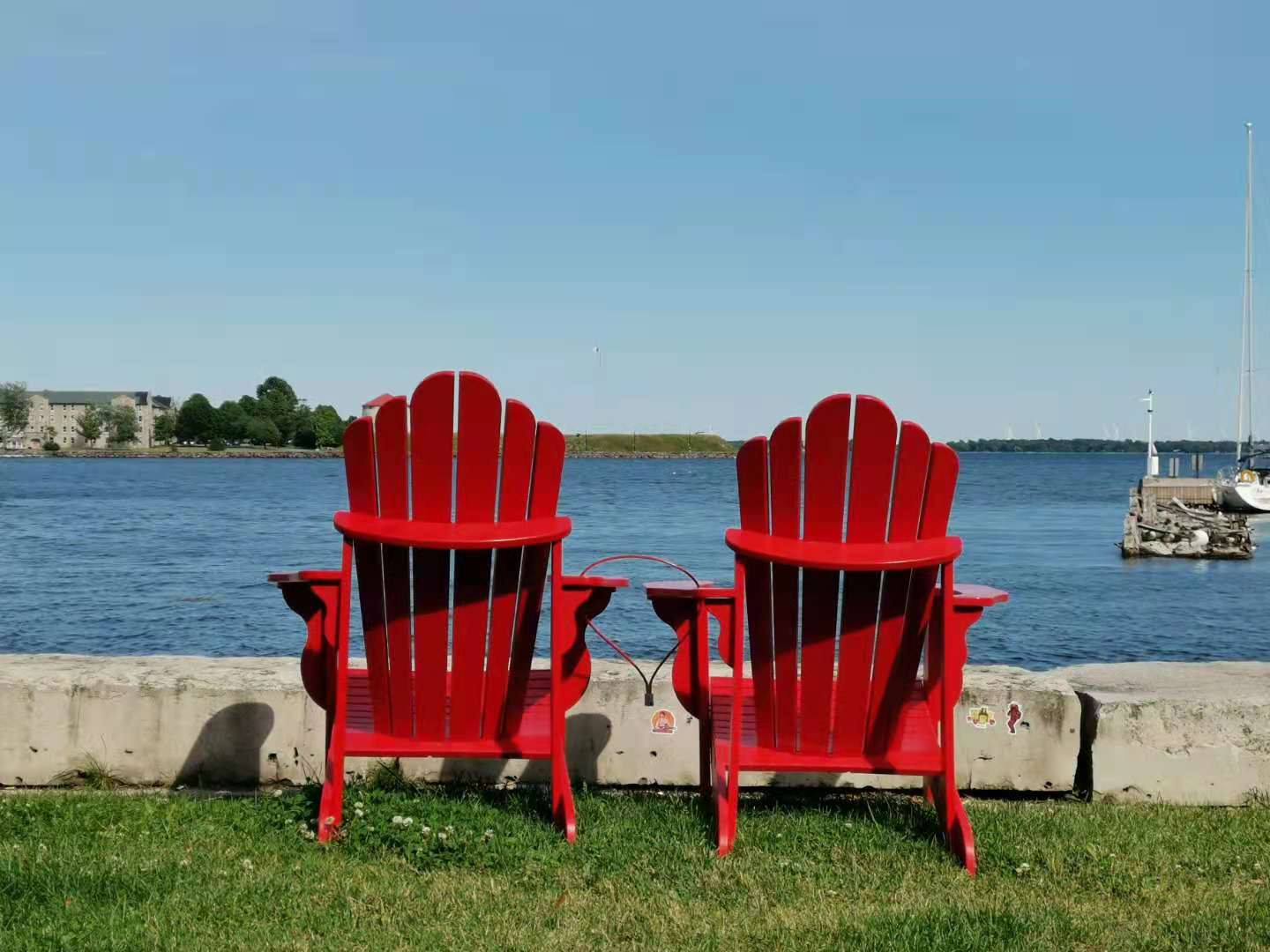Canadian Maple Leaf Card Application Guide: Complete Analysis Of Conditions, Renewal And Naturalization Points
Canadian Maple Leaf Card Application Guide: Complete Analysis Of Conditions, Renewal And Naturalization Points
The value of Canadian maple leaf card has increased again! iTalkBB Elite will introduce you in detail the application conditions for maple leaf card, required materials, renewal process, residence time requirements, as well as key issues such as the loss, expiration of maple leaf card, and how people can return overseas.
After obtaining your permanent residence in Canada, your first priority is to apply for a Canadian citizenship card. This card is both your identity certificate in Canada and your entry and exit certificate. But don't rush to celebrate, Canada's government service speed is not known for its "slowness". Just waiting for this card to be sent to your hands, ranging from three to four months to more than half a year, making people wonder whether the immigration department is hand-made every document. Moreover, Canada’s maple leaf card cannot be permanently valid if you get it. It is actually a long-term qualification certificate that requires continuous management. Otherwise, you may encounter identity trouble if you are not careful!

How to successfully submit, extend the duration or reimburse the Canadian citizenship certificate to prevent important links from being blocked? Experts will analyze the qualifications for obtaining identity certificates, subsequent maintenance standards, general misunderstandings, and how to successfully become Canadian citizens item by item. Whether you are a newcomer who has just obtained permanent residence or a resident who has met the residence requirements and wants to improve his status, you can get the necessary guidance from it!
Table of contents
1. Introduction to Canadian Maple Leaf Card
2. Application conditions for Canadian maple leaf card
3. Canadian maple leaf card application process
4. Solutions for Canadian maple card loss, damage or expired
5. Maple Leaf Card and Naturalization Canada
Summarize
1. Introduction to Canadian Maple Leaf Card

The Canadian permanent resident card, or the maple leaf card, is the official certificate of Canadian immigration. Once the applicant obtains this card, it indicates that he has passed the immigration review and has officially obtained permanent residence qualification in Canada. This card is not only a sign of identity, but also an indispensable document for permanent residents when traveling at home and abroad. If Chinese citizens live overseas for a long time, if they want to return to their motherland, they must have complete identity documents or hold special travel documents, otherwise they may encounter obstacles to entry.
Canadian maple card holders, as permanent residents, enjoy many key benefits, such as unrestricted living, employment and learning, while also being able to take advantage of the state’s public health services, social security systems and various support provided by the government. They can settle down anywhere in the country without geographical restrictions and have nearly the same treatment as their own citizens in the job market.
However, there are significant differences between Maple Leaf Card identity and Canadian citizenship. People holding maple leaf cards still retain their original nationality, cannot obtain a Canadian passport, and have no right to vote or participate in politics. Meanwhile, permanent residents face some constraints in some areas of work, such as key federal positions. On the contrary, once you become a Canadian citizen, you mean you are fully integrated into the local community and you no longer have to worry about renewal or residence requirements for the maple leaf card. Therefore, some settlers will apply for Canadian citizenship when they meet the standards of becoming citizens, with the goal of obtaining a more reliable foothold and more comprehensive protection.
2. Application requirements for Canadian Maple Leaf Card
The primary prerequisite for applying for a Canadian maple leaf card is to be permanent resident qualifications. The government absorbs immigrants based on a variety of immigration programs. Applicants must meet the specified category standards and meet the residence time requirements before they can successfully obtain or update the card. Elements such as personal tax payment status and illegal situation may also affect the application or renewal process.
2.1 Main immigration categories for maple leaf card applications
The most common way to obtain permanent resident status in Canada is through immigration programs established in the country, each immigration program targets applicants with different conditions. Core immigration programs cover:
The preferred channels include skilled immigration categories, such as federal skilled immigration, skilled immigration, and Canadian experience categories. These categories are mainly aimed at talents with high abilities and are screened through the scoring system. The competition is fierce, but the approval process will be completed faster.
Provincial nomination plan, each province independently formulates relevant policies. The purpose is to provide an official nomination to qualified applicants for certain specific industries or those relatively scarce occupations. This plan is more suitable for immigration applicants who have certain work experience or have certain connections in the province.
The Family Reunion Immigration Program is designed to facilitate Canadian citizens or permanent residents to accept their immediate family members, including spouses, parents, and children, so that they can immigrate to Canada together.
Start a business or participate in investment immigration: The target group is individuals with business background or rich wealth, who need to invest money or be responsible for company management.
2.2 Residence time requirements for maple leaf card
Canada stipulates that if permanent residents want to renew their maple leaf card, they must meet one condition. This condition is that in the past five years, my actual residence time will reach 730 days. These 730 days are a period of about two years. The calculation method of residence time is relatively flexible and can be calculated cumulatively. Specifically, these 730 days can include the following situations.
The number of days actually lived in Canada (regardless of continuous or not).
Living abroad with the spouse or parents of Canadian citizens, this provision also applies to children under the age of eighteen.
Working in Canadian corporate or government departments and performing tasks abroad, it is important to ensure that you continue to maintain Canadian permanent residence qualifications during your tenure.
If the 730-day residence standard cannot be met, the applicant may encounter the unsuccessful renewal of the maple leaf card, and may even lose the permanent resident qualification. Therefore, permanent residents who intend to leave Canada for a long time need to make arrangements as soon as possible to ensure that they meet the living hours regulations so as not to hinder the reissue of the maple leaf card.
2.3 Other factors affecting the application of maple leaf card
Some situations, which do not depend on immigration programs or length of residence, may interfere with applicants' acquisition or renewal of permanent Canadian resident status, such as:
Criminal History: If the person involved commits a serious crime outside Canada, he may not be approved for extension and may be disqualified from permanent residence.
Taxation: settlers need to fulfill their tax responsibilities. If they fail to declare or default on taxes for a long time, it may hinder the subsequent visa renewal.
Error content: Transmitting false or misleading information may cause the application to fail and may also lead to the cancellation of permanent residence qualifications.
When applying for permanent resident status in Canada, you must check your personal residence time, tax declaration status and personal information in advance, and ensure that all submitted documents are true and without omissions. When special circumstances arise, such as long-term residence abroad, tax disputes or other legal disputes, it is best to seek help from professional immigration consultants or attorneys to avoid permanent resident status being affected.
If you need to grasp the trends of Canadian immigration policy adjustment in 2025 and ensure a comprehensive arrangement of personal identity, please refer to the in-depth analysis article "The situation of becoming stricter? Interpretation of Canadian study abroad immigration policy: including graduation permit, spouse permit and new regulations on pilot programs. We will continue to provide detailed interpretations of the latest immigration policy changes, graduate work permits and spouse work permits, and will also track the latest progress of major pilot projects to help you quickly obtain important information and scientifically arrange future immigration and career planning directions!
3. Canadian Maple Leaf Card Application Process

3.1 Preparation before applying for a maple leaf card
Before submitting a formal Canadian citizenship card application, the parties must prepare all necessary application documents, covering but not limited to the following:
Identity document: a copy of a valid passport or travel document
Immigration certificate: Canadian permanent residents confirmation letter (COPR) or login record
Identity certificate: Information about the address you live in the past five years, including bank statements, rental agreements, water, electricity and gas payment certificates, etc.
Photo: It must meet the Canadian Immigration Bureau standards, it is for maple leaf card, the background is white, the size is fifty mm by seventy mm, the imaging time must be within half a year
Application form: IMM 5444E (Maple Leaf Card Application Form)
Fee payment certificate: The applicant needs to pay the application cost set by the government and submit the payment basis at the same time
Before submitting an application, you must carefully check the latest documents released by the Immigration Bureau to ensure that all the information is complete, the status is normal and meet the standards, so as not to return the approval or delay the time due to the lack of some content.
3.2 Online application vs paper application
Immigration Canada (IRCC) has two application channels, namely online submission and written submission. Applicants can choose appropriate channels to submit based on their personal circumstances.
Those who apply for the first time, apply for another application or need to apply for a Canadian visa can submit an application through online channels. The online application platform is easy to use, and can instantly upload relevant materials, complete fee payment, and check application progress, thus saving the time required for document delivery and speeding up approval.
Applications in special circumstances, such as if the system technical failure cannot be submitted online, you can use paper application. The applicant needs to print the form, attach the required materials, and then send it to the designated location of the Immigration Bureau. This application method is slower than online application, and there is a possibility of lost documents during mailing, so it is not recommended to use it except for special circumstances.
If you want to get a quick response to approval, you should submit an application online, and be sure to ensure that all relevant documents are prepared in full, so that you can effectively speed up the processing speed.
3.3 Detailed explanation of the steps to apply for a maple leaf card
Applicants must register their personal account on the official website of the Canadian Immigration Agency, and then select the application program for permanent residence identity cards.
When completing the IMM 5444E application, be sure to ensure that the content is completely correct and covers details such as personal information, past immigration status, residence duration, contact information, etc.
Relevant materials need to be submitted: including personal qualification certificates, personal image photos, address vouchers, etc. It is necessary to ensure that these materials meet the specification requirements. They generally need to be in PDF or JPEG format.
Application fee delivery: The applicant must submit a maple leaf card application fee online, the general amount is 50 Canadian dollars. When the money is paid, the system will establish a payment certificate and must download it and retain it.
When submitting the application documents, be sure to confirm that all content is accurate and then complete the submission via the Internet. If you choose to apply in paper version, you must package the complete set of application materials and send them to the receiving location designated by the Ministry of Immigration, Refugees and Citizenship.
3.4 Waiting time and progress query after submitting the maple leaf card
The closing period of the maple leaf card will be affected by the number of applications, the special degree of the case, and the operational efficiency of the administrative organization. According to the web page information of the Ministry of Immigration, Refugees and Citizens, the regular processing period for the first application for Maple Leaf Card in 2025 is between six and nine months, and renewal applications can usually be completed in three to six months.
Applicants can use the Immigration Bureau online platform or official progress tracking site to keep abreast of application progress. During the review period, the relevant departments may request the applicant to supplement materials or participate in the interview. The applicant must ensure that the email and account information is unimpeded and quickly feedback the needs of the immigration department to avoid delaying the progress of the application.
If the waiting time exceeds the official estimated time limit, the applicant has the right to contact the Immigration Bureau to assist the department or initiate a status inquiry to find out the detailed progress. If the application is not approved, the applicant has the right to review the reasons for the non-acceptance, and add relevant documents or apply again depending on the specific circumstances.
4. Solutions for Canadian Maple Leaf Card Lost, Damaged or Expired
4.1 How to apply for a replacement maple leaf card?
If the maple leaf card is lost, damaged or involves data adjustments (such as a name change), the parties may submit a reimbursement request to the Immigration, Refugees and Citizenship Canada (IRCC). The procedures for reimbursing this card are roughly the same as the regular extension. The parties must prepare the following documents:
IMM Form 5444E (Maple Leaf Card Reissue Application Form)
Identity documents (such as passport homepage, immigration paper COPR or confirmation letter)
Certificate of residence (bank bills, water and electricity bills, lease contracts, etc. in the past 5 years)
Photo (Photographs on white background that meet IRCC standards, 50mm×70mm)
Fee payment certificate (reissue fee of 50 CAD)
If it is lost or stolen, IMM Form 5451 (lost report)
Applicants can either submit a reissue application using the online platform or mail paper application materials through letters. The processing period for re-processing procedures is generally between three months and six months, and the actual time required must be based on the approval status of the immigration department.
If a person is outside North America, if the red card is lost or invalid, how to handle the application matters needs to be passed through the PRTD process.
If a Canadian citizen's maple leaf is lost or invalid overseas, there is no way to enter Canada directly with it. In this case, you must go to the nearest Canadian visa center to apply for a permanent resident travel document, which is used as a temporary identification to help you return to Canada.
PRTD application conditions:
The applicant remains a permanent resident of Canada
Meet the residence time requirements (living for at least 730 days in the past 5 years)
Provide adequate travel reasons for why you need to return to Canada
PRTD application process:
Fill in the IMM Form 5529 (PRTD Application Form)
Provide valid identity documents (such as passport, immigration confirmation letter COPR)
Submit a certificate of residence for the past 5 years (bank statements, rental contracts, tax records, etc.)
Pay the application fee (CAD 50)
Submit an application at your local Canadian Visa Centre (VAC)
Waiting for review and then going to get the PRTD, it usually takes 4 to 8 weeks, and it may take longer for special circumstances.
PRTD is a short-term document to and from Canada and can only be used to return to Canada. Once you enter the country, the Canadian Immigration Agency may require you to apply for a new maple leaf card immediately. Therefore, if the maple leaf card is about to expire and you plan to go abroad, it is best to renew your visa before leaving to avoid trouble.
4.3 Things to note when reissueing a maple leaf card or applying for a PRTD
Verify residence eligibility: Before retrieving or updating the PRTD documents, the applicant must prove that he has actually lived in Canada for seven years within the past five years, otherwise he will undergo identity verification or there is a risk of permanent resident status being cancelled.
It usually takes three months to half a year to apply for a maple leaf card, and the PRTD review process may also last for several weeks. It is best to make arrangements in advance to avoid delaying travel plans.
Prevent hasty departure from the identity situation: If the Canadian citizen card is about to expire but is still available, it is best to go through re-processing in China, which can reduce the possibility of being unable to return due to document failure.
5. Maple Leaf Card and Naturalization Canada
Maple Leaf Card holders are permanent residents of Canada and can continue to live, engage in careers and obtain relevant benefits in the country. At the same time, they still maintain their original nationality and face certain constraints in specific areas. For many permanent residents, striving for Canadian citizenship is a key way to deepen social participation and fight for broader rights. After becoming a Canadian citizen, applicants can apply for a Canadian passport without having to apply for a maple leaf card or meet the living conditions. They will also benefit from travel, participation in political activities and employment development.
5.1 How do maple leaf card holders apply for naturalization?
Becoming a permanent resident of Canadian citizenship must meet several requirements. One is that in the last five years, at least 1095 days, that is, about three years, living in Canada. If you hold a temporary status, such as a work permit or a study permit, your residence time can also be included in the corresponding proportion. At the same time, applicants must also make tax declarations for at least three years within the past five years, and even if they have no income, they must submit a zero income declaration form.
Applicants who are between 18 and 54 years old must demonstrate their mastery of English or French. This level must meet the Level 4 standards of the Canadian Language Benchmark, which can be confirmed by the scores of the language proficiency test or by local Canadian educational background. In addition, the applicant must successfully complete the assessment of Canadian citizenship. The subjects of the assessment cover multiple aspects such as history, geography, law, and government system. The assessment form is a single choice. There are a total of 20 questions. Applicants need to answer at least 15 questions correctly to be considered qualified. If the applicant has a serious criminal record, he may be denied naturalization.
The process of joining the country first requires submitting application materials, then paying relevant fees, and then waiting patiently for the official review results. If the conditions are met, you must participate in the citizenship assessment or accept an interview. When all the prescribed conditions are met, the relevant personnel will be notified to hold a solemn oath ceremony for naturalization, so that they can officially obtain Canadian citizenship and are also eligible to apply for a Canadian travel document.
5.2 The difference between a maple leaf card and a Canadian passport
Maple Leaf Card holders are treated the same as Canadian citizens in terms of job opportunities, social services, etc., but there are still some key differences between the two. Permanent residents are not allowed to participate in Canadian voting activities, nor can they apply for Canadian passports, and their posts in some government departments or military personnel will be subject to some restrictions. In addition, people holding maple leaf cards need to live for 730 days every five years, otherwise they may lose their identity. Canadian citizens are not subject to their place of residence and can still retain their citizenship qualifications when they live abroad for a long time.
Canadian citizens can apply for their own passports, and they can get a superior visa-free treatment when traveling overseas than those with maple leaf cards, and the procedures for entering and leaving Canada are more smooth. As a permanent resident, you must bring a maple leaf card or a permanent resident travel document to return home during your trip, which undoubtedly adds a lot of trouble.
5.3 The impact of naturalization on maple leaf card holders
After becoming a Canadian citizen, the applicant officially joins the country's nationality and no longer has to go through the renewal procedures for the maple leaf card, and no longer needs to meet the conditions for living time. However, it should be noted that although Canada recognizes dual nationality, some countries do not support it, and applicants may lose their original nationality as a result. Before submitting a naturalization application, it is best to understand the relevant laws and regulations of your country's nationality to avoid adversely affecting your identity arrangement.
Individuals who have long-term plans to stay in Canada can obtain more stable identity protection by joining nationality, enjoy unrestricted rights to transnational travel, and have broader career prospects. If you still want to retain your original nationality and are willing to continue to meet the renewal conditions of the Maple Leaf Card, then maintaining permanent resident status is a feasible option. For those who are uncertain whether to be naturalized, seeking advice from professional immigration consultants can help make more appropriate choices.
Summarize
The process of applying for a maple leaf card seems simple, but in fact there are many risks hidden. The materials are not prepared sufficiently, which is very likely to result in the application being returned, causing months of time to be wasted. If the actual residence time has not met the standard, the Immigration Bureau may require you to provide additional documents to prove your identity. It is particularly important to note that if you only remember to renew your signature after the card expires, or if your identity fails when you are abroad, it will be extremely cumbersome to deal with it, and its complexity is enough to remind people of the undercover life in TV series. If you encounter these situations, or are confused about the application procedures, reissue documents, and accounting for residence time, please go to the official website of the elite lawyer and seek help from practicing immigration consultants and lawyers to avoid malfunctioning identity caused by subtle mistakes.

It is worth affirming to obtain permanent resident status in Canada, but whether to choose to become a citizen is a key choice that concerns one's long-term plans. This is not only about travel documents, but also involves the transformation of citizenship, adjustment of tax system, and even related to many aspects such as the inheritance of legal rights, changes in fund management, and changes in property arrangements. Although Canada allows dual nationality, does your country of birth also accept this? How to deal with tax issues after becoming a citizen? If you mainly engage in overseas activities in the future, will it be more suitable for your needs to hold a permanent resident status? These issues should be carefully evaluated. The determination of identity is related to personal will and also involves comprehensive analysis at multiple levels such as law, finance, and taxation. It is recommended to seek expert opinions before the final decision. Elite integrates all kinds of services for you and we can provide all the Canadian immigration guidance you need.





